Modern fighter aircraft of Romania
During the Cold War, Romania, along with the USSR, the GDR, Czechoslovakia, Poland, Hungary and Bulgaria, was part of the Warsaw Pact Organization (WTO). At the same time, the General Secretary of the Central Committee of the Romanian Communist Party, Nicolae Ceausescu, who concentrated all power in his hands, pursued a “multi-vector policy” and took an unfriendly position towards the USSR on a number of issues. In this regard, Romania, unlike other ATS countries, if it received Soviet weapon, then most often not the most modern, and in smaller volumes, which inevitably affected the equipment and combat capabilities of the Romanian Air Force and Air Defense.
Socialist legacy
Shortly after the end of World War II and the establishment of a pro-Soviet regime in Romania, the reform of the armed forces began. Since 1949, Soviet-made aircraft began to enter the national air force: Po-2, Yak-18, Tu-2, Il-10 and La-9.
Already in 1950, Romanian pilots began retraining for jet Yak-17 and Yak-23, and from 1952 to 1956 Romania received 88 MiG-15bis and MiG-17F / PF fighters.
In 1958-1960. 15 MiG-19P supersonic interceptors entered service. This aircraft was armed with two 30-mm cannons, ORO-57K launchers with 8 S-5 unguided rockets. The pilot had an RP-5 radar sight at his disposal. In the 1960s, the interceptor was rearmed with the K-13 UR.
After mastering the MiG-19P, Romania additionally acquired 45 modernized MiG-19PM interceptors with the RP-5M radar sight. The MiG-19PM lost its cannons and was armed with four RS-2U (K-5M) guided missiles. Operation of the MiG-19S/PM continued in Romania until the second half of the 1970s.
In February 1962, the development of supersonic front-line fighters MiG-21F-13 began.
The MiG-21F-13 was the first mass modification in the numerous "twenty-first" family. Although the on-board instrumentation of this fighter was very simple, the aircraft was popular.
The MiG-21F-13 did not have its own radar, the sighting equipment consisted of an ASP-5N-VU1 optical sight, an analog computer VRD-1, and a radio range finder SRD-5 Kvant, located in the radio-transparent fairing of the central body of the engine air intake. Built-in armament included a 30 mm HP-30 cannon. Two K-13 air combat missiles with IR seeker could be suspended under the wing. It was also possible to use the 57-mm NAR S-5 against air targets.
In the second half of the 1970s, in addition to the existing MiG-21F-13 and two-seat MiG-21U, Romania received improved MiG-21MF and MiG-21UM twins.
The MiG-21MF were equipped with the RP-22 airborne radar with a detection range of up to 30 km. In the arsenal of this light front-line fighter, there were R-3R (K-13R) missiles with a semi-active radar homing head and a firing range of up to 15 km, which seriously increased the ability to destroy air targets at night and in conditions of poor visibility.
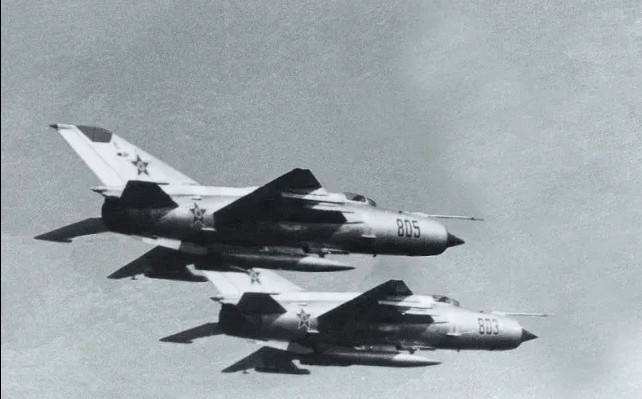
In total, the USSR transferred to Romania 175 MiG-21F-13, MiG-21U / UM and MiG-21MF. As of 1991, there were more than 80 MiG-21MFs in service.
In the late 1970s, deliveries of Romanian-made IAR 93 Vultur jet aircraft began to combat squadrons.
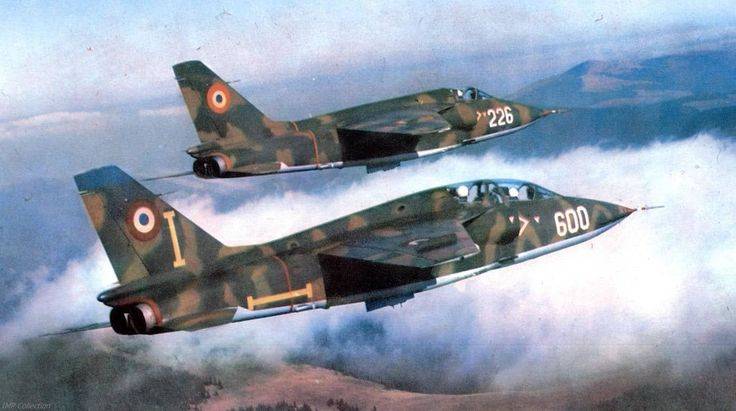
Aircraft IAR 93 Vultur
This twin-engine subsonic combat aircraft was developed to replace the MiG-15 and MiG-17, which were used in the Romanian air force as fighter-bombers at the end of their careers. However, in addition to strike missions, the IAR 93 Vultur was considered as a fighter designed to intercept relatively low-speed and low-altitude air targets, against which it could use the 23-mm GSh-23L cannon, as well as air-to-air missiles K-13 and R-60.
According to expert estimates, the Romanian IAR 93, when used correctly, was able to successfully withstand the American A-10 Thunderbolt II attack aircraft or the West German Alpha Jet, as well as anti-tank and transport-combat helicopters.
Taking into account pre-series copies, 86 single and double IAR 93s of several modifications were built, which were used until 1998.
In the period from 1979 to 1985, Romania received 36 single-seat MiG-23MF variable geometry wing fighters and 10 MiG-23UB combat trainers. In the early 1990s, Russia handed over two more used MiG-23UBs.
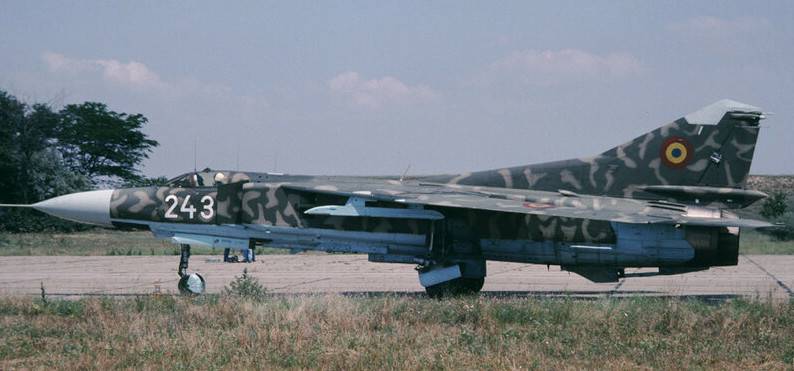
MiG-23МФ
All fighters of the "twenty-third" family were complex and expensive to operate, and also made increased demands on the skill level of the flight and technical staff. At the same time, the MiG-23MF was not bad as an all-weather and all-day interceptor.
In terms of acceleration characteristics, maximum speed and flight range, the MiG-23MF was significantly superior to the MiG-21MF, which formed the basis of the Romanian fighter aviation. The MiG-23MF avionics included the Sapfir-23E radar with a detection range of 45 km, the TP-23 heat direction finder and the Lazur-SM command guidance system. The armament consisted of two R-23R or R-23T medium-range missiles, two to four K-13M short-range missiles or R-60 melee missiles, and a hanging container with a 23-mm GSh-23L cannon.
The MiG-23MF and MiG-23UB fighters were in service with the 57th Fighter Aviation Regiment, which also operated the MiG-29. Service "twenty-thirds" in the Romanian Air Force continued until 2001.
More than three dozen MiG-23MF / UB and IAR-93 fighters are still “stored” in the open air at the Timisoara airfield. But with full confidence it can be argued that these planes will never take off again.
In 1987, in connection with the need to update the fighter fleet, Romania applied for the 4th generation MiG-29 fighters. Although the Soviet-Romanian relations were not cloudless, the USSR went forward, and an agreement was reached on the supply of 12 single-seat MiG-29A in version 9.12A and 2 combat training MiG-29UB in version 9.51. The first aircraft arrived in Romania in December 1989.
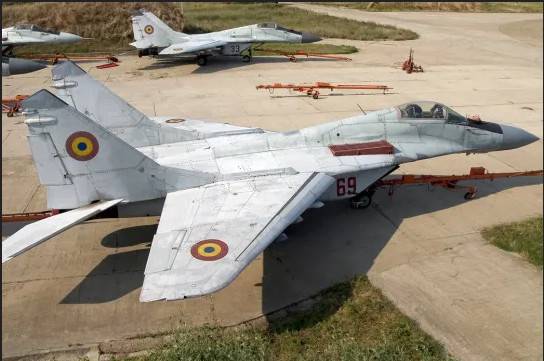
After the collapse of the Ceausescu regime and the collapse of the USSR, four more single and two double fighters were received. Somewhere in 1994, Moldova handed over one MiG-29 (9-13) with an integrated Gardenia electronic warfare station and an increased internal fuel supply.
The service of the MiG-29 in the Romanian Air Force was short-lived. Due to poor maintenance, the aircraft quickly fell into disrepair and were written off in 2004.
Modernization of the MiG-21MF to the level of the MiG-21 Lancer
In the mid-1990s, it became quite obvious that the Romanian Air Force did not meet modern requirements. After the collapse of the communist system, the likelihood of an armed conflict with neighbors tended to zero, but the country still needed a minimum number of fighters capable of ensuring the integrity of the airspace.
Although the much more modern MiG-23MF and MiG-29 were still in service, the command of the Romanian Air Force decided, in parallel with the refurbishment, to subject the MiG-21MF and MiG-21UM, built in the second half of the 1970s, to a radical modernization.
Since Romania did not have the necessary developments and specialists with the appropriate qualifications, in May 1993 a contract was signed with the Israeli company Israel Aerospace Industries. The Israelis had to prepare technical documentation and manufacture equipment, and the Romanian company IAR Brasov was engaged in its installation.
The main areas of modernization were: the use of modern means of obtaining the necessary information, increasing the effectiveness of the interaction "pilot - aircraft" and survivability in modern combat conditions.
The upgrade program is known as the IAI MIG-21-2000, but the Romanian Air Force aircraft were designated Lancer A (fighter-bomber), Lancer B (two-seat) and Lancer C (air defense interceptor). The contract was officially completed in April 2003. Its cost was $330 million.
During the restoration and modernization work, most of the avionics were replaced. So, instead of the obsolete Soviet radar RP-22, the Israeli contractor proposed to install a new multi-mode pulse Doppler station EL / M-2032 with a target detection range of up to 70 km. The updated fire control system is controlled by an on-board multifunctional computer developed by the Israeli company Elbit.
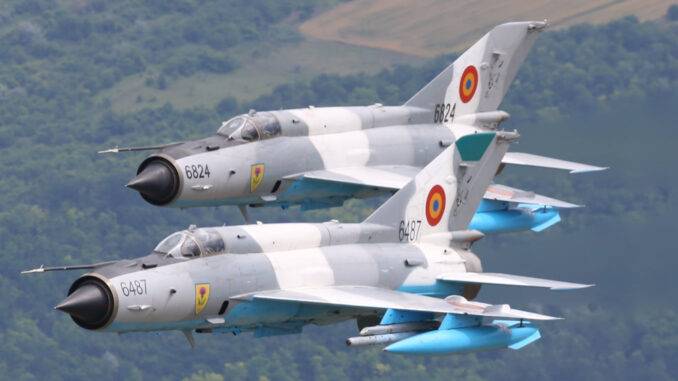
Two-seat combat training MiGs were equipped with an EL / M-2001B radio rangefinder. To warn of radar exposure, all upgraded aircraft received modern broadband receivers. Protection against missiles with IR seeker is provided by automatic firing of heat traps.
To display basic information, a multifunctional color display measuring 12,7x12,7 cm is designed. Information can also be displayed on the windshield.
A color monitor is available on all modifications and is used for navigation, weapon control and other functions. The second monochrome is installed on Lancer C interceptors and is designed to display the air situation from the radar.
The equipment also included the inertial navigation system LISA 4000 and data exchange equipment in the closed mode of the Link 11 standard.
The upgraded Lancers received Israeli weapons - Rafael's Python-3 air combat missiles and Elbit's Whizzard guided bombs. New pylons have also been developed for the MiG-21 Lancer, allowing the suspension of both Western-standard weapons and Russian-Soviet-made weapons.
According to open sources, the Romanian Air Force received: 75 strike Lancer A, 10 two-seat Lancer B and 25 Lancer C fighters. However, such figures are questionable. By the end of the 1990s, a significant part of the Romanian MiG-21MF ran out of service, and the required number of aircraft was not available. It is possible that in order to fulfill the Romanian contract, the same type of fighters were purchased in other countries, or the number of modernized aircraft included aircraft of foreign customers who preferred not to advertise the fact of modernization.
F-16MLU fighters
At the beginning of the 21st century, the basis of the Romanian military aviation was the MiG-40 Lancer. However, part of the Lancers was lost in flight accidents, and many Soviet-built vehicles, whose age was approaching 10 years old, had already exhausted their resources. 21 years after the modernization of the MiG-2013MF, new fighters were required to maintain the fighter fleet at a minimum level. According to the Military Balance 10 directory, nine years ago there were 6 Lancer A modification aircraft, 20 two-seat Lancer B and XNUMX Lancer C aircraft in service.
Romania did not have the necessary financial resources to acquire new combat aircraft, and, quite predictably, the command of Forţele Aeriene Române turned its attention to used fighters.
In 2010, the Romanian Ministry of Defense unveiled a plan for the phased modernization of the country's air force. At the first stage, it was planned to purchase 24 used F-16 fighters, at the second - 24 new F-16 Block 50/52, and at the third - 24 F-35A Lightning II fighters. Later, due to a lack of funds in the defense budget, the plan was revised.
In October 2013, the Romanian Ministry of Defense bought a batch of 12 used F-16AM / BM Fighting Falcon fighters from the Portuguese military department. Another 3 fighters were purchased in the United States under the Excess Defense Articles (EDA) program.
During presales, the F-16AM/BM block 15 aircraft were refurbished and upgraded to the F-16MLU 5.2R level, which offer capabilities similar to the F-16 Block 50/52 variants.
The amount of the transaction was not disclosed, but, according to experts, it amounted to at least $700 million. Aviation weapons, spare parts and ground equipment were transferred along with the aircraft. Training of flight and technical personnel was carried out, as well as the creation of a service and repair center.
The delivery of the F-16MLU was carried out from September 2016 to September 2017, the aircraft became part of the 53rd Fighter Squadron.
At the beginning of 2022, information appeared that Romania intends to buy 32 F-16A/B fighters from the Norwegian Air Force for a total of $513 million. For their modernization in the United States to F-16MLU 6.5.2 level, related logistics support, as well as a package of equipment and services, it is planned to spend another $100 million. The aircraft will be delivered in a fully combat-ready condition with a resource that ensures their operation for at least 10 years before the 5th generation F-35A Lightning II fighters are put into service.
It is assumed that all F-16MLU 6.5.2 purchased in Norway will be transferred to combat units before 2024. In 2023, the Romanian Air Force should operate at least 24 F-16MLU 6.5.2. As Norwegian fighters arrive, the modernization of aircraft previously purchased in Portugal will begin.
The number and current state of the fighter fleet of the Romanian Air Force
Currently, the Romanian Air Force has about two dozen single-seat MiG-21 Lancer C and four to five double-seat MiG-21 Lancer B in flight condition.
Until recently, more than three dozen MiG-21s were stored at the Bacau airfield near the border with Moldova. Previously, this airfield was the home of the 951st Fighter Squadron, where Lancer pilots were trained.
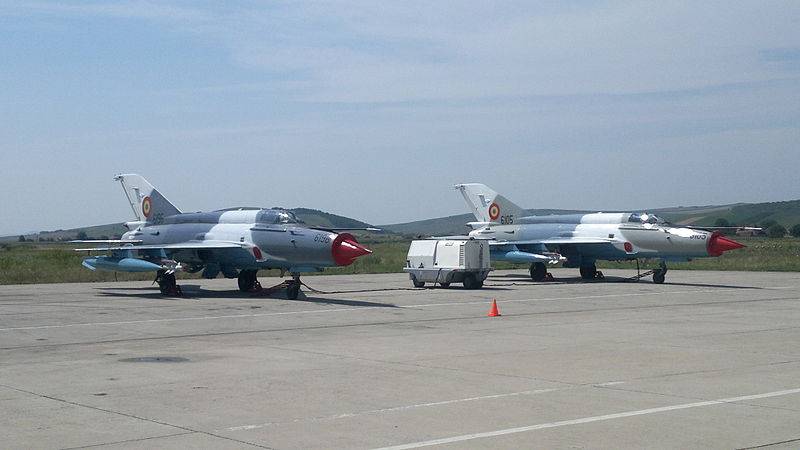
MiG-21 Lancer C from the 711th Fighter Squadron
Aircraft of this type are in service with the 711th Fighter Squadron, deployed at the 71st General Emanoil Ionescu airbase, located near the city of Campia Turzi in the central part of the country.
Four MiG-21 Lancer C, belonging to the 71st air base, as part of the NATO Baltic Air Policing mission from August 2007 to November 2007 were on duty at the Siauliai air base in Lithuania. Romanian fighters replaced the French Mirage 2000C in the Baltics. The Romanian air group attracted a lot of local media attention, not least because it was only the second time that Soviet-made fighters available in NATO countries were on duty in Šiauliai. Before that, MiG-29s of the Polish Air Force were deployed there in 2006.
The Lancers, assigned to the 71st Air Base, have been flying intensively since 2004. However, after 10 years of service, their activity began to decline, and judging by the available satellite images, most of the combat aircraft at the 71st air base are now not in flight condition.
The 861st Squadron, whose pilots fly single-seat and two-seat modernized MiGs, is officially assigned to the 86th Aviator George Mochornita airbase, located near the village of Fetesti, in southeastern Romania.
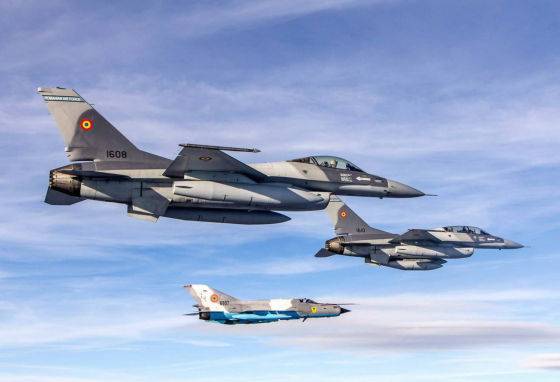
MiG-21 Lancer C and F-16MLU fighters of the Romanian Air Force
The 86rd squadron, armed with F-53MLU fighters, is also stationed at the 16th air base. Unlike the worn-out Lancers, the Romanian Fighting Falcons are for the most part in good technical condition, and their coefficient of technical readiness is not lower than 0,8. According to reference data, 14 aircraft are in service.
After the reconstruction of the infrastructure of the 86th Air Base, carried out from 2014 to 2016 in order to bring it to NATO standards, it is used only to accommodate the F-16MLU, which is currently the main combat force of the Romanian Air Force.
MiG-21 fighters from the Aviator Georgy Mochornita air base were relocated to the Mihail Kogalniceanu airfield in the vicinity of Constanta, which is at the disposal of the command of the 86th air base. In total, Romania has 13 airfields with a hard surface and the necessary infrastructure, on which fighters can be based for a long time.
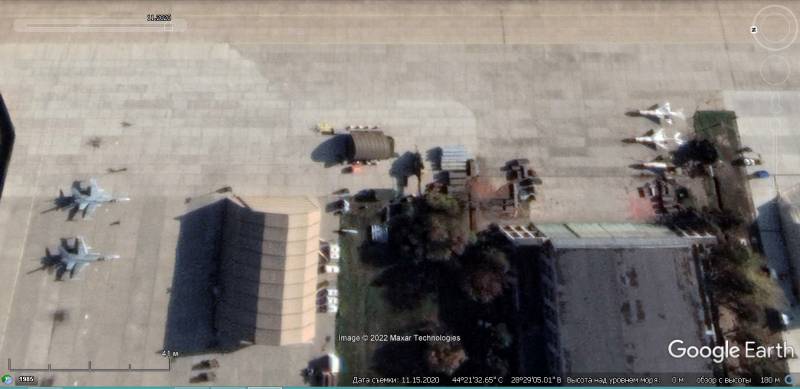
Satellite image of Google Earth: F-16MLU and MiG-21 Lancer fighters at the Mihail Kogalniceanu airfield
The Romanian Air Force lost several Lancers in flight accidents. The last disaster occurred on March 2, 2022. The MiG-21 fighter of the Romanian Air Force took off from the airfield "Mikhail Kogelniceanu" and crashed in the area between the settlements of Kocalak and Gura Dobrogei. An IAR 330 Puma helicopter flew in search of him, which also crashed, killing all seven crew members. Until the reasons for the incident were clarified, the Romanian Ministry of Defense banned all flights of the MiG-21 and IAR 330 Puma.
However, it has recently become known that the MiG-21 will serve until the arrival of F-16 fighters from Norway. Currently, the Romanian government is actively discussing the possibility of transferring MiG-21 fighter jets to Ukraine, which are in flight condition. However, given the age and technical condition of these vehicles, they are unlikely to be of serious combat value.
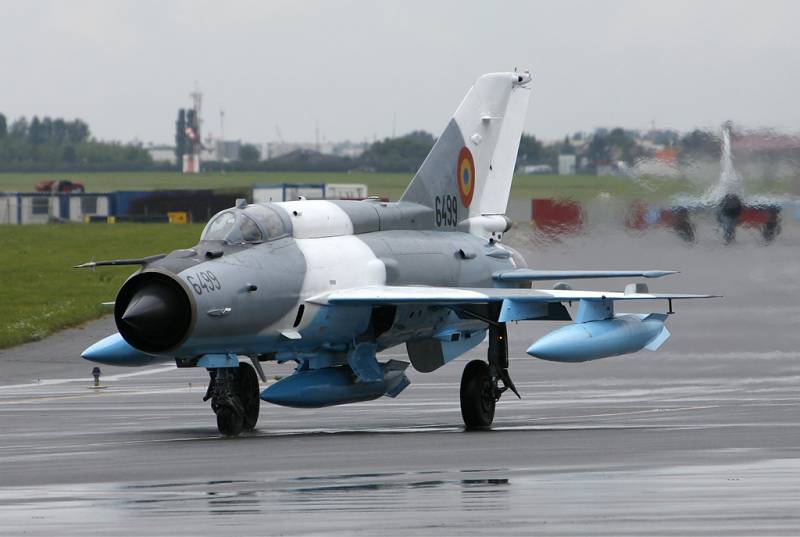
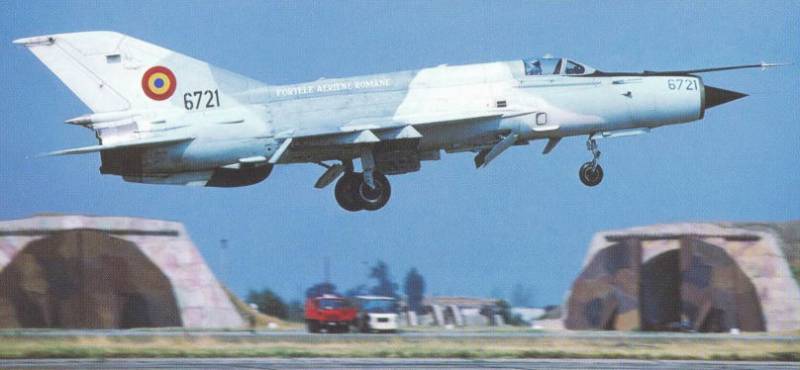
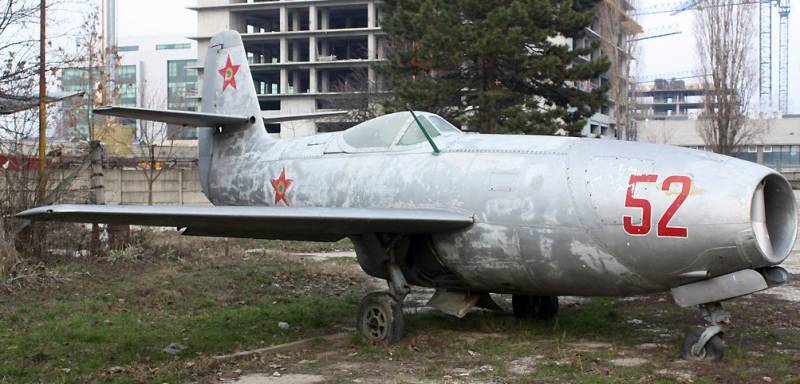
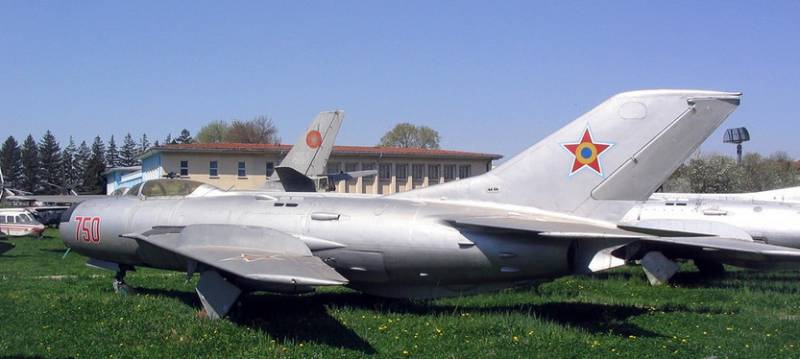
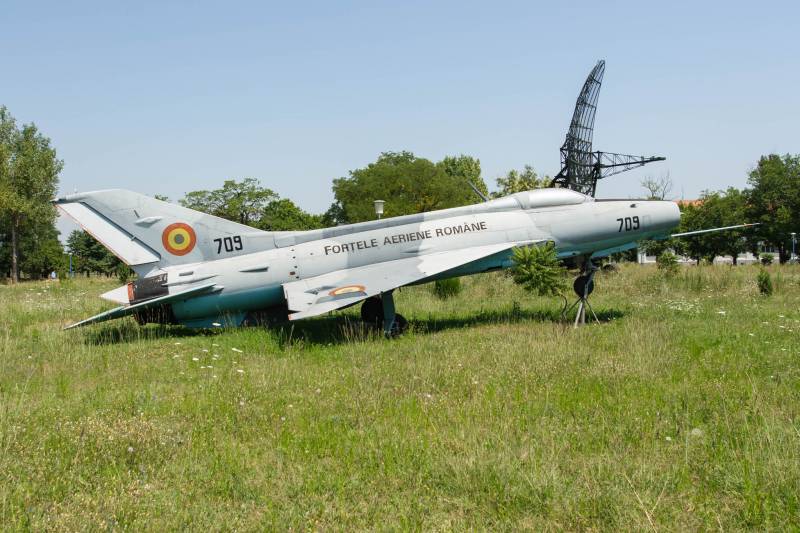
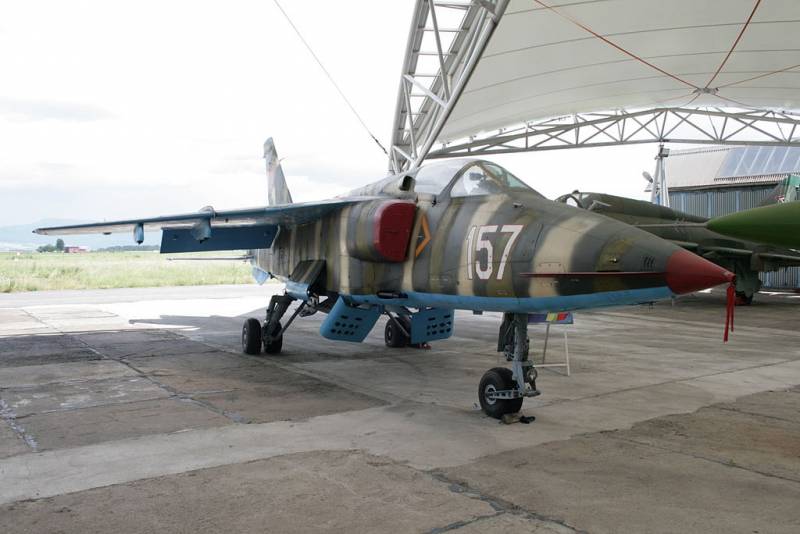
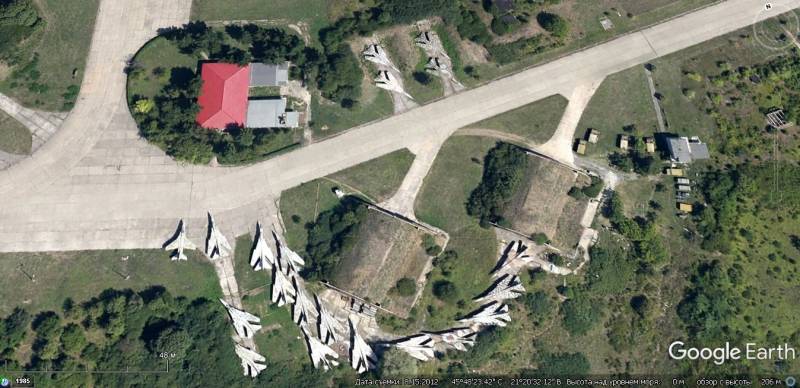
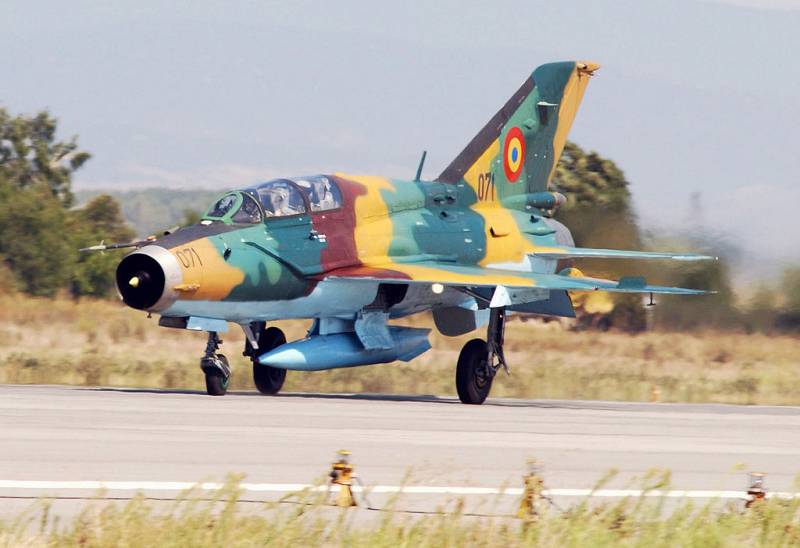

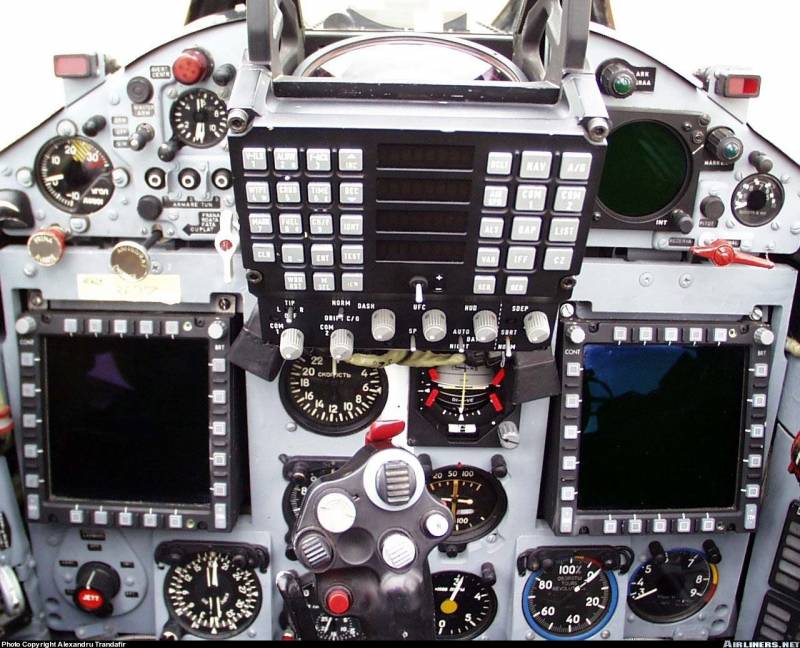
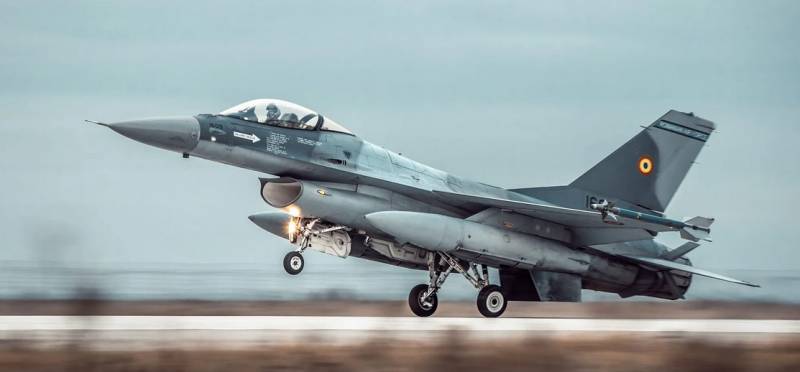
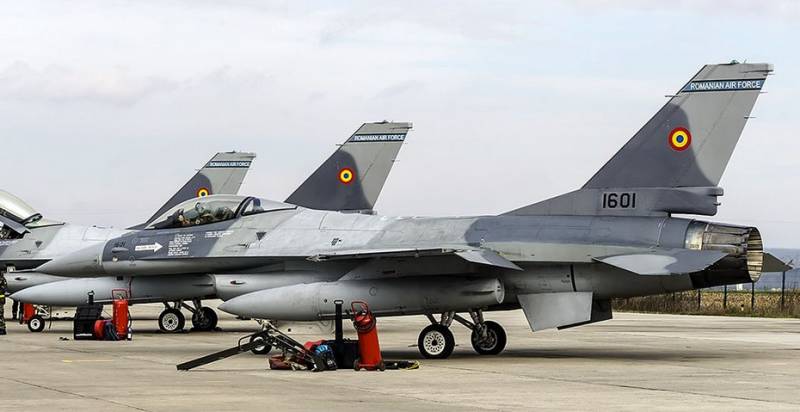
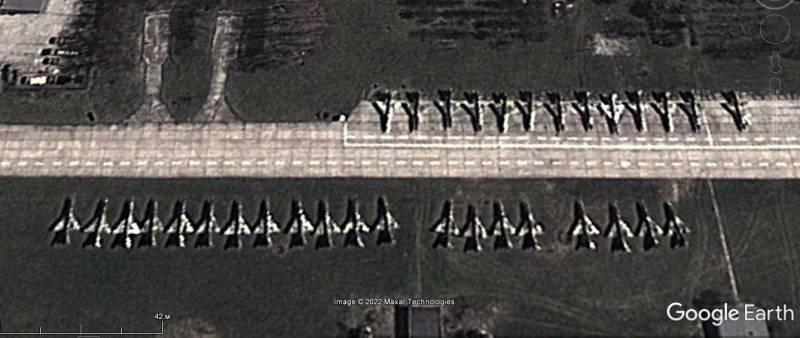
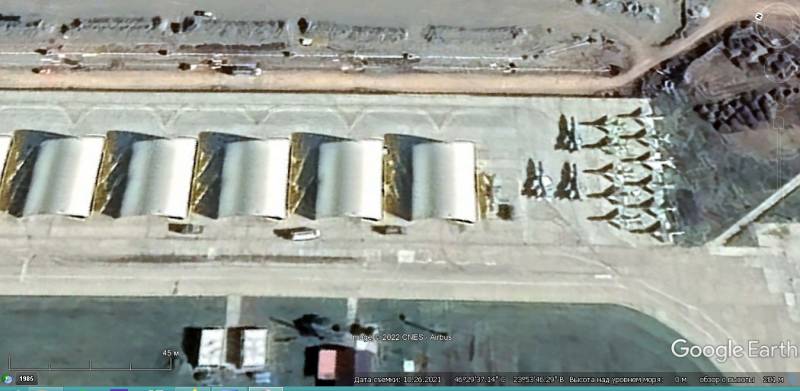
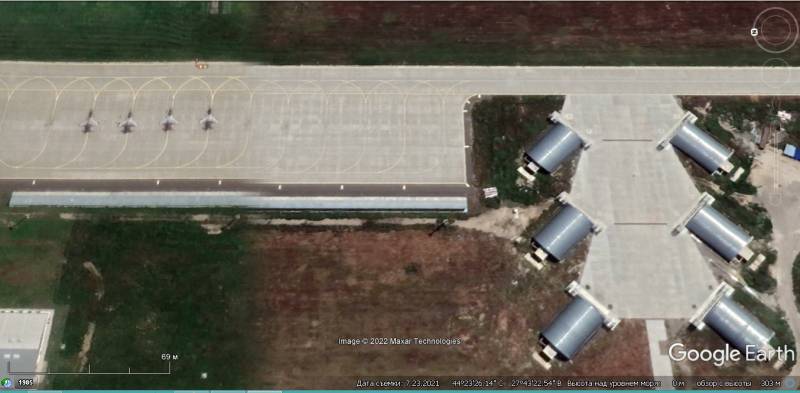
Information